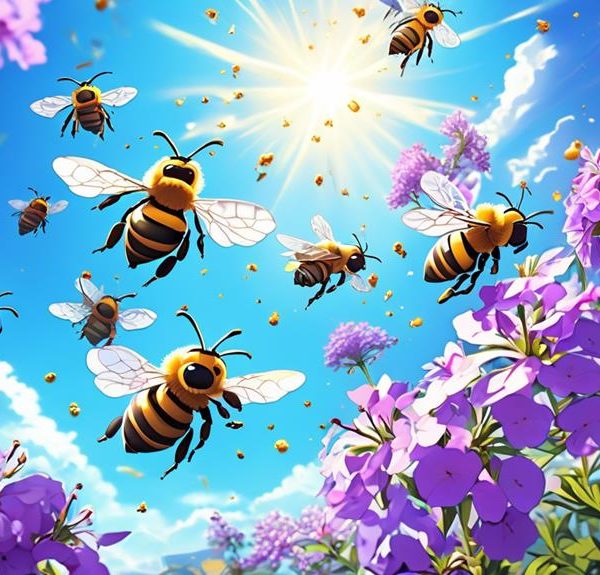Buzzing with curiosity about why bees love rosemary? Discover nature's captivating connections in this exploration of a bee's attraction to this aromatic herb.
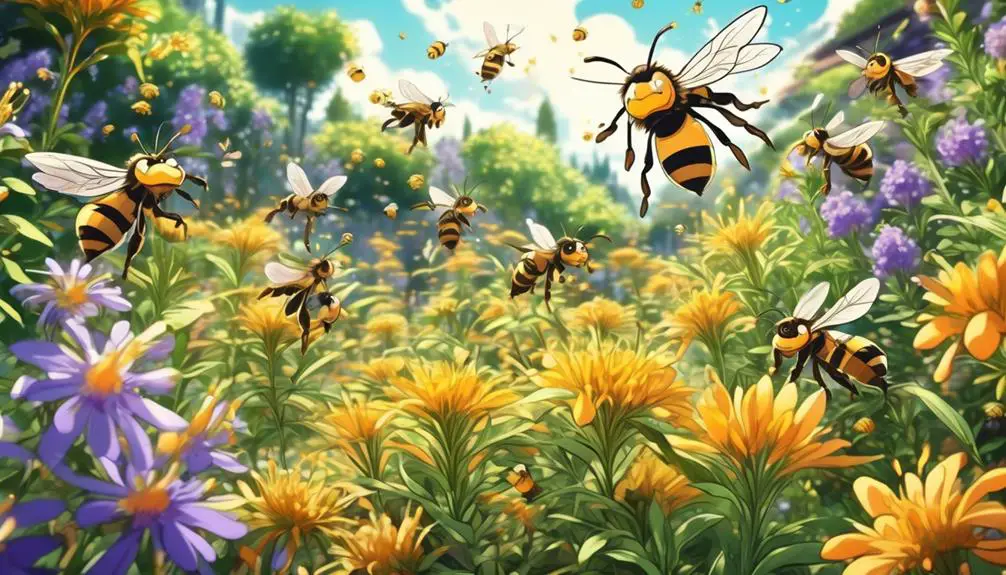
Do Bees Like Rosemary?
Like Sherlock Holmes on the trail of a mystery, you've probably noticed a buzzing crowd of bees around your rosemary plants and wondered about the relationship between the two. Do bees actually like rosemary? Is it the scent, the color, or the taste of the nectar that attracts them?
The answers to these questions may not only enhance your understanding of nature's intricate connections, but also transform how you design and maintain your garden. So, let's explore this fascinating interaction further, shall we?
Key Takeaways
- Bees are attracted to rosemary due to its rich nectar and pollen, making it a valuable plant for promoting pollination in gardens.
- Rosemary provides a continuous source of food for bees, as it blooms almost year-round.
- The symbiotic relationship between bees and rosemary enhances the garden ecosystem and contributes to the genetic diversity and health of rosemary plants.
- Incorporating rosemary into gardens can help deter pests, reduce the need for chemical pesticides, and provide shelter and protection for bees.
Understanding Bee Attraction
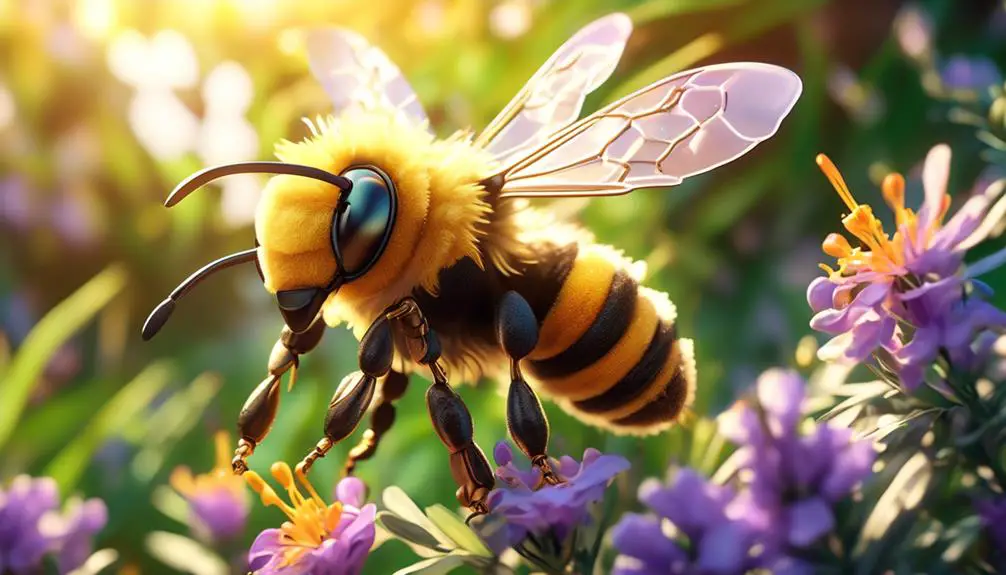
To fully grasp why bees are irresistibly drawn to rosemary, you must delve into the intersection of the bees' biological programming and the unique characteristics of this herb. It's all about nectar and pollen, the two primary reasons why bees are attracted to plants. You see, rosemary is rich in both.
The bees' biological programming is geared towards finding nectar and pollen. These are crucial for their survival and reproduction. Nectar, primarily composed of sugars, serves as an energy source, while pollen provides proteins and fats necessary for bee larvae growth.
Rosemary, on the other hand, blooms almost year-round, making it a reliable, continuous source of food. It's flowers are blue, purple or white, colors highly visible to bees. Moreover, its strong aromatic oils are irresistible to their olfactory senses.
The shape of rosemary flowers also plays a role. They're tubular and small, perfectly suited for the bees' body size and tongue length. This allows efficient nectar extraction while simultaneously rubbing the bee's body against the flower's anthers, facilitating pollen transfer.
The Role of Rosemary in Gardens
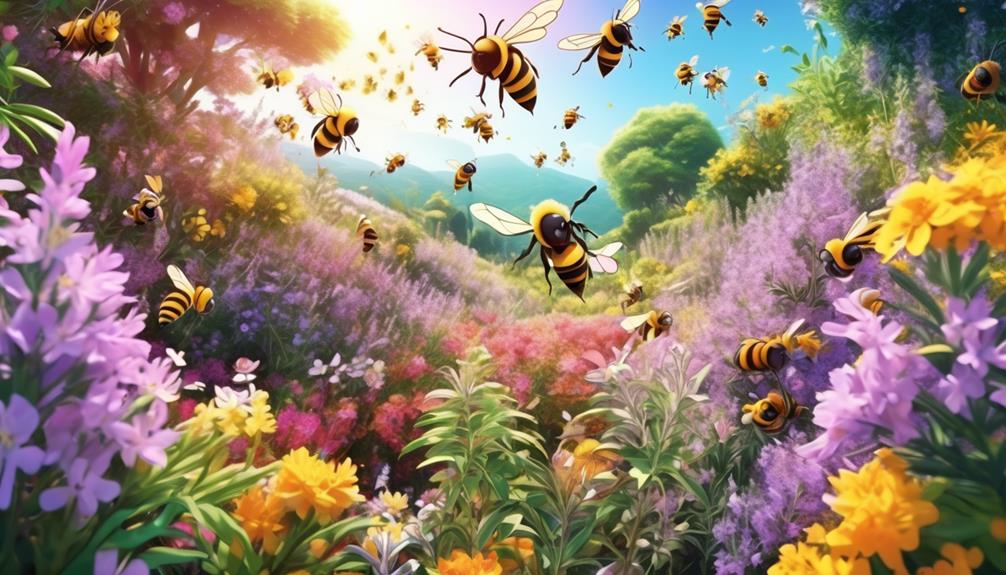
As a gardener, you'll find that incorporating rosemary into your landscape not only lures a constant buzz of bees, but also offers a multitude of other benefits.
Rosemary, scientifically known as Rosmarinus officinalis, is a perennial herb with needle-like leaves that are rich in essential oils. These oils emit a strong aroma that bees can't resist, thus promoting pollination and boosting your garden's productivity.
Moreover, rosemary is drought-tolerant, making it an ideal choice for xeriscaping or water-efficient gardening. It grows well in a variety of soil types, though it prefers well-drained, slightly alkaline soil. This hardiness means you won't be spending excessive time or effort on maintenance.
Another advantage of rosemary is its role as a companion plant. Its pungent aroma can deter many garden pests, including cabbage moths and carrot flies. Simultaneously, it attracts beneficial insects, like ladybugs and lacewings, that prey on harmful pests.
Lastly, rosemary is an edible herb, adding value to your kitchen as well as your garden. Its leaves, either fresh or dried, infuse dishes with a distinctive flavor, making your cooking as vibrant as your garden.
Bees and Rosemary: A Detailed Look

Now let's scrutinize the captivating dance between bees and rosemary, exploring the science behind their mutual attraction and the implications for your garden's ecosystem. Bees are drawn to rosemary due to its rich nectar and pollen, which are vital for their survival. The distinctive blue flowers of rosemary are particularly attractive to bees, as this color is highly visible to them.
Bee Attraction | Rosemary Benefit | Garden Impact |
|---|---|---|
Rich Nectar & Pollen | Pollination | Increased Plant Variety |
Blue Flowers | Increased Visitors | Enhanced Ecosystem |
Flowering Duration | Extended Season | Stability Throughout Year |
High Visibility | Constant Interaction | Abundant Wildlife |
Natural Habitat | Protection | Healthy Bee Population |
But bees aren't just beneficiaries here. In return, they play a crucial role in the pollination of your rosemary plants, ensuring their propagation. This symbiotic relationship contributes to the biodiversity of your garden, attracting other wildlife and creating a balanced and resilient ecosystem. Understanding this intricate relationship can help you design and manage your garden in a way that supports and enhances the natural behavior of bees and the healthy growth of rosemary.
Potential Benefits for Bees

Delving into the potential benefits for bees, it's important to realize that rosemary provides not only a rich source of food, but also a safe and natural habitat. This perennial herb blooms from spring to fall, offering a continuous supply of nectar when many other plant sources aren't available. The nectar is rich in sugars, providing bees with the energy they need for their daily activities.
Rosemary's leaves provide bees with pollen, a crucial source of proteins, vitamins, and minerals. This helps in the nourishment of larvae, ensuring the health and productivity of the colony. The dense evergreen nature of rosemary also offers shelter and protection from predators and harsh weather conditions.
Moreover, rosemary is resistant to most pests, meaning it doesn't require chemical pesticides that could harm bees. In fact, the plant's strong scent is known to deter pests, providing an added layer of protection.
Impact on Rosemary Plants
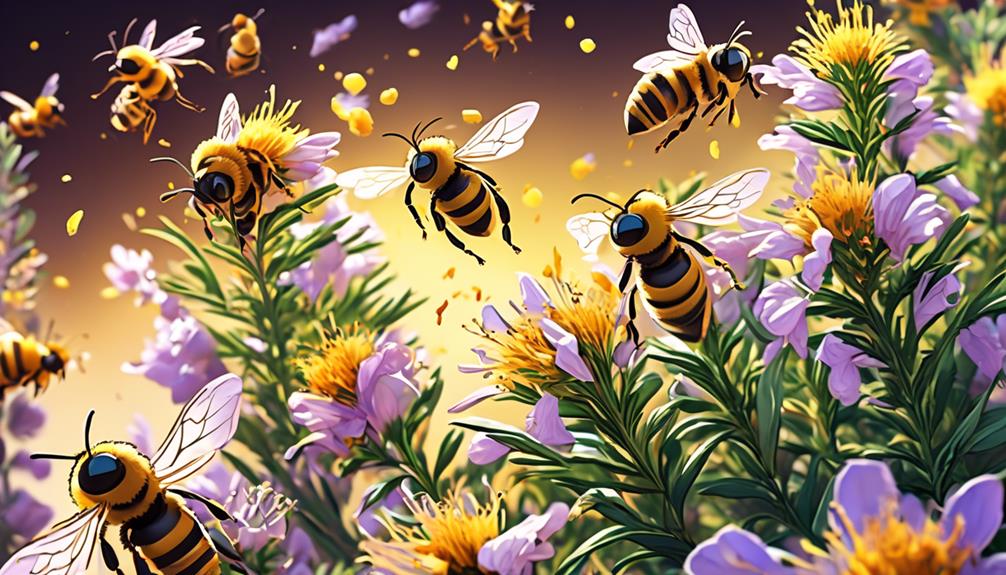
In examining the symbiosis, you'll find that bees' interaction with rosemary plants isn't a one-way benefit; these buzzing pollinators play a crucial role in the plant's reproduction and growth. As bees collect nectar from the rosemary flowers, they inadvertently pick up pollen on their bodies, transferring it from the male parts of a flower to the female parts of another, thus enabling fertilization. This process, known as pollination, is vital for the production of seeds and the propagation of the plant species.
Let's delve deeper and look at the following table, which encapsulates the impact of bees on rosemary plants:
Impact | Effect on Plant | Emotional Response |
|---|---|---|
Pollination | Enhances seed production | Elation |
Genetic Diversity | Promotes plant variation | Hope |
Plant Propagation | Boosts plant population | Satisfaction |
Through pollination, bees contribute to genetic diversity, leading to a healthier and more robust plant population capable of withstanding disease and changing environmental conditions. This results in a sense of hope for the survival of the species. The increase in the plant population, furthermore, brings satisfaction, knowing nature's cycle continues unabated. Thus, the relationship between bees and rosemary plants is not only biologically significant but emotionally resonant too.
Practical Tips for Bee-Friendly Gardening
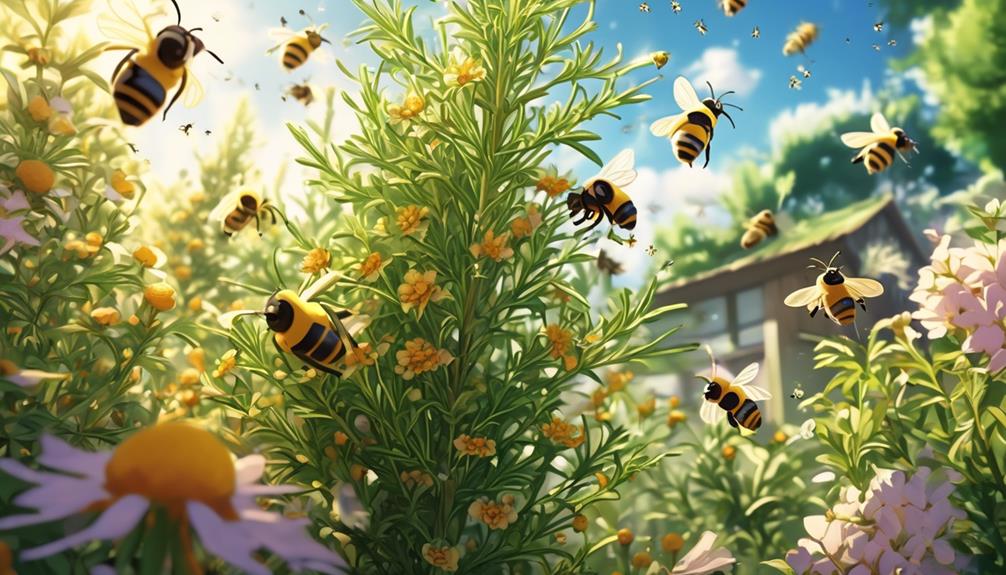
Gardener's enthusiasm for promoting bee-friendly environments can be channeled into practical steps, ensuring a thriving garden that serves as a haven for these essential pollinators.
First, diversify your plant selection. Bees are attracted to a wide range of flowering plants, so include a variety of species that bloom at different times of the year. This ensures a continuous food source for bees.
Second, consider the size and color of your plants. Bees are particularly drawn to blue, purple, white, and yellow flowers. They also prefer flowers with a single layer of petals which allow easy access to nectar and pollen.
Additionally, avoid using pesticides. These chemicals can be harmful, even lethal, to bees. Instead, opt for organic methods of pest control. Encourage natural predators, or introduce beneficial insects that prey on harmful pests.
Lastly, provide fresh water for bees. A shallow dish with pebbles or marbles for the bees to land on will do the trick. Bees need water for digestion and temperature regulation, but they can't swim, so it's crucial to offer them a safe place to drink.
These steps, when implemented, can significantly enhance your garden's appeal to bees.
Frequently Asked Questions
What Other Herbs or Plants Are Attractive to Bees?
You're curious about what other herbs or plants attract bees. They're not just interested in rosemary. Bees are also attracted to plants such as lavender, mint, and thyme.
Flowering plants, like sunflowers and daisies, are also quite appealing to them. Bees prefer plants with open or flat flowers, which allow them easy access to nectar.
How Can I Safely Remove Bees From My Rosemary Plants Without Causing Harm?
You can safely remove bees from your plants without harm by using natural repellents. Mix a solution of water and mild soap, then spray it onto your rosemary.
Remember, it's important not to harm the bees, as they're essential for pollination. Another method is to plant bee-repelling plants nearby, such as marigolds or geraniums.
Always handle bees with care, consider hiring a professional if the infestation is severe.
Are There Certain Types of Bees That Are More Attracted to Rosemary Than Others?
Yes, certain types of bees are more attracted to rosemary than others. Honeybees and bumblebees, in particular, find rosemary very appealing due to its rich nectar. These bees are drawn to the plant's blue flowers, which provide a plentiful food source.
However, other bee species might also visit your rosemary plants. It's important to note that bees play a vital role in pollinating, so their presence is beneficial.
Besides Rosemary, What Other Plants Can I Grow to Promote Bee Conservation?
Besides rosemary, you can also grow plants like lavender, thyme, and sage to attract bees. Sunflowers and cosmos are great too.
Bees prefer native plants, and they're particularly drawn to flowers with single, open petals where they can easily access the nectar and pollen.
It's also beneficial to plant a variety of flowers that bloom at different times to provide a steady food source throughout the year.
What Are Some Other Ways to Support the Local Bee Population, Apart From Planting Rosemary?
You can support your local bee population in several ways.
First, avoid using insecticides in your garden. They're harmful to bees.
Next, provide a water source for them, like a shallow dish.
Lastly, encourage local authorities to let wildflowers grow in public spaces.
These actions, together with growing plants they love, will significantly help the bees.
Conclusion
Indeed, bees are quite fond of rosemary. Its vibrant blue flowers and rich nectar provide a potent lure for these essential pollinators.
Not only is rosemary beneficial for bees, but their pollination enhances the health and productivity of your rosemary plants.
So, make your garden bee-friendly! Plant rosemary, watch the bees enjoy it, and reap the rewards of a thriving, eco-friendly garden.
Remember, a garden buzzing with bees is a happy, healthy garden!

